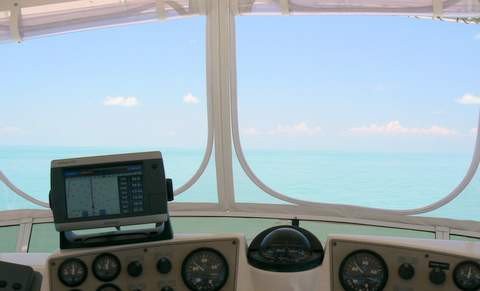I'm going to quote someone on BoatDesign and hope it's OK to do that. This person is a very highly respected poster on BD and I believe he is a NA and an engineer. By the way I am known as "Easy Rider" on BoatDesign.
"I'm arriving a bit late to this interesting discussion.
Easy, you should google for Van Oossanen's paper "Motor Yacht Hull Form Design for the Displacement to Semi-Displacement Speed Range". At the page 632 (don't worry, the paper starts with the page 629
) there is a graph which shows a linearly increasing correlation between the immersed transom area and the resistance (expressed through the Telfer coefficient, explained in the paper). The graph is a result of a significant number of towing tank tests performed by Wolfson Unit on a number of different displacement and planing hulls.
The graph shows that in the displacement cruising speeds range (Fn,L = 0.35), a planing type hull will have a resistance about 2.2-2.5 times higher than a displacement hull of same length and displacement. Which is, If I understand it well, what you've been seeking for in your initial post."
This was the post I started on BD to help answer the question on TF. I also assume the tank test hulls had no keels, struts or other appendages. This sounds like it was a very well controlled experiment. "Opinion's" differed widely on the BD thread but all agreed running on one engine was more economical at disp speeds*** ....disp speeds being less than hull speed. One poster (highly respected) told of his experience running a twin IO powered diesel boat w the engines rather close together. Seems to me to be about the best platform for doing this as could be found as the lower unit and prop can be raised out of the water and asmetrical thrust would be minimized. On this boat w high tech fuel flow sensors he achieved a 30% decrease in fuel consumption compared to running w both engines. Generally speaking it seems a planing hull boat should have at least twice as much drag at disp speeds as a full disp boat. However, there are many variables.

-- Edited by nomadwilly on Thursday 9th of June 2011 08:43:24 AM



